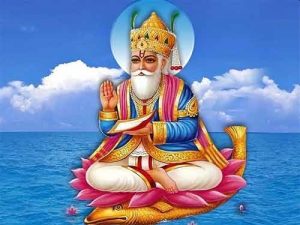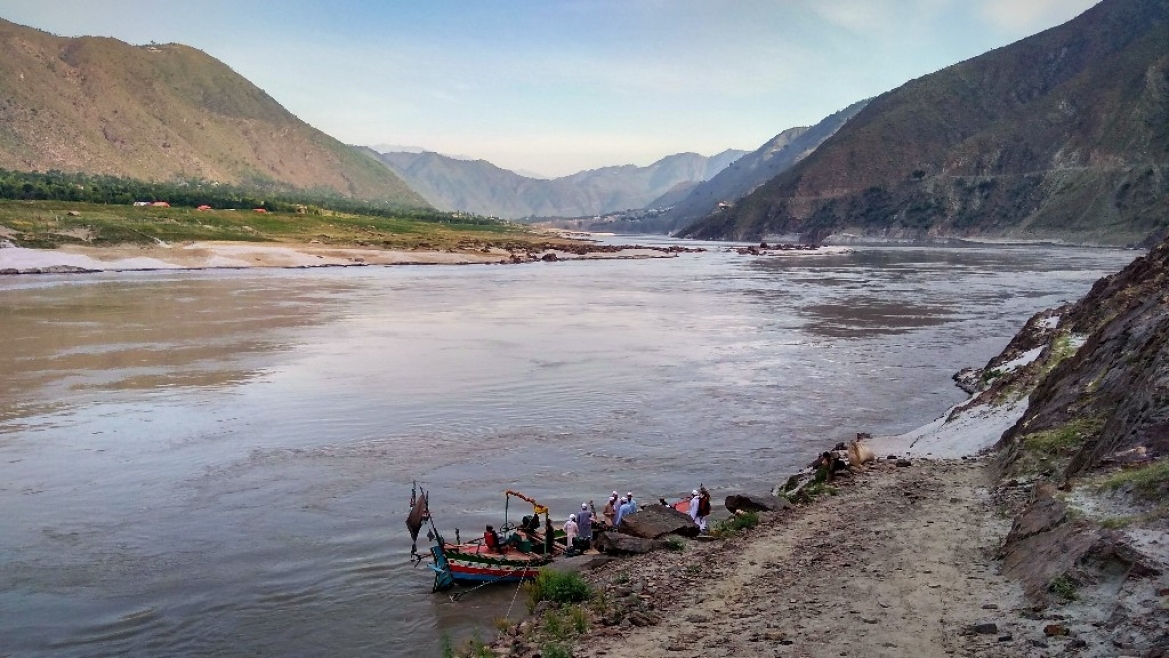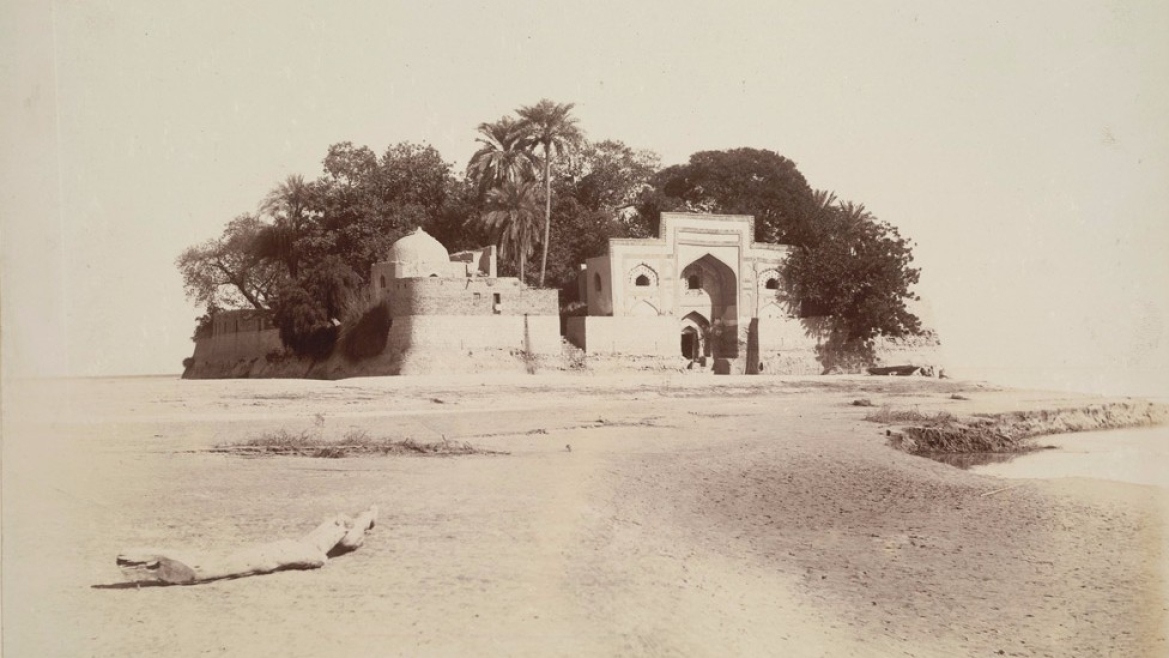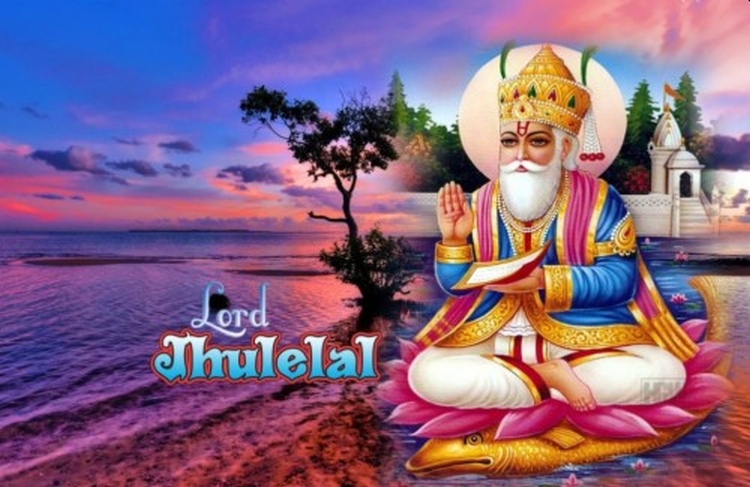
Jhulelal, also known as Uderolal, is a legendary saint of the Sindhi Community. He is believed to be an incarnation of Varuna, the Sea God in Hinduism. The story of Jhulelal is associated an evil ruler Mirkshah Badshah attacking the Sindhi community settled in Thatta in Sindh.
The Hindus of the region believed in the scriptures and they remembered the promise made by Lord Krishna in the Bhagavad Gita – He will appear on earth to protect dharma and save his devotees (Yada yada hi dharmasya glanirbhavati bharata. Abhythanamadharmasya tadatmanam srijamyaham. Paritranaya sadhunang vinashay chadushkritam Dharmasangsthapanarthay sambhabami yuge yuge).
They prayed continuously for forty days and on the fortieth day there was a voice in the sky which predicted the birth of a child who will protect the Sindhi community. The voice assured them that God will be born in the womb of Devaki, a pious woman in the community. The chalioh festival of Sindhis is dedicated to this divine event.
The people then went to Mirkshah Badshah and told him that they needed time to think about converting to Islam.
On the first day of Chaitra month, Devaki gave birth to a divine child. On the day, there was torrential rain. Immediately upon the birth of the child, the mother saw in his mouth the Sindhu River flowing and an old man riding on a Pala fish upstream in a northerly direction. The birth of the divine child is celebrated annually on Chaitra Shukla Paksha Pratipada tithi as Cheti Chand.
The child was named Uday Chand and was lovingly called ‘Uderolal’ and ‘Amarlal’. When the child was placed in the cradle for the naming ceremony, the cradle started swinging on its own. Hence, they renamed him ‘Jhulelal’ swinging child. He was also known as Jhulan from then onwards.
Mirkshah came to know about the birth of the child and he directed his minister to visit the child. The evil minister carried a rose flower dipped in poison with the intention to kill the child. As soon as the minister presented the flower to the child, the child kicked it away. The minister saw an old man in place of the child and then a young man. He bowed before the child and begged for mercy. He soon became a disciple of Jhulelal.
Mirkshah was informed by the minister about the divine child. The ruler developed fear and started dreaming about the child strangling him and at times he saw the dream in which he was chased by an old man with a sword.
From a young age, Jhulelal was serving people without any fear or favour. He served people without anticipating any return.
Mirkshah was forced by his courtiers and religious teachers to confront the Sindhis and force them to convert to Islam. The ruler finally decided to meet the divine child.
Just before the meeting the true followers of Jhulelal had many divine visions like an old man with a white beard, in saintly clothes, riding on Pala fish and moving against the tide. Some had the vision of Uderolal riding on a horse, a flag in one hand and a sword in the other, with endless troops of warriors following Uderolal.
At the court Jhulelal convinced Mirkshah Badshah that there is only one God and all religions lead to the same God. But the courtiers, religious fanatics and religious scholars prevailed upon the ruler and forced him to arrest Jhulelal.
As the officials of his court moved to arrest Jhulelal, the entire court was flooded. Simultaneously fire broke out in the palace. The whole palace was burning and no one could come inside or escape. Jhulelal spoke again, “Mirkshah, your God and mine are not two different ones but One. Had the Almighty so desired, He could have ordained Hindus to be born Muslims. But no, God wanted Unity in diversity. The entire world is but His manifestation”.
‘He whom you call Allah and my people call Krishna, are but one and the same!’…
Mirkshah realized his folly and asked Jhulelal to rescue him and the people in the palace. Jhulelal smiled and the he fire was blown out and the waters too receded. Jhulelal pronounced, “Worship of God is to be done in its blended form of Jyoti (flame) and Jal (water). Let every human being worship the Almighty with whatever name he desires. Let there be bonds of brotherhood.” Mirkshah gave up his idea of converting people to islam and started treating everyone equally.

Jhulelal is said to have been swallowed up by the earth after this and the awed tyrant Mirkshah Badshah, reformed . The Hindus of Thatta built a temple at the spot where Jhulelal was swallowed up by the earth and the Muslims built a dargah next to it, as a mark of respect.
Sindh, the cradle of some of the biggest urban centres of the Harappan period, was one of the first areas to be ruled by Islamic rulers in the 8th century CE. It was also the gateway for many Sufi minstrels who made their way into India, even settling there. It is perhaps a factor of this, that the land continued to be a secular haven, where Hindus and Muslims co-existed peacefully till India’s partition with Pakistan in 1947, drove a wedge.

Over the centuries, the Sufi and Hindu mystics of Sindh leaned on each other creating a unique amalgam of beliefs and in many senses Jhulelal, reflects this coming together. The God of the Indus worshiped as Jhulelal and Uderolal by the Hindus, is also revered as Zinda Pir, by the local Muslims.

![]()

